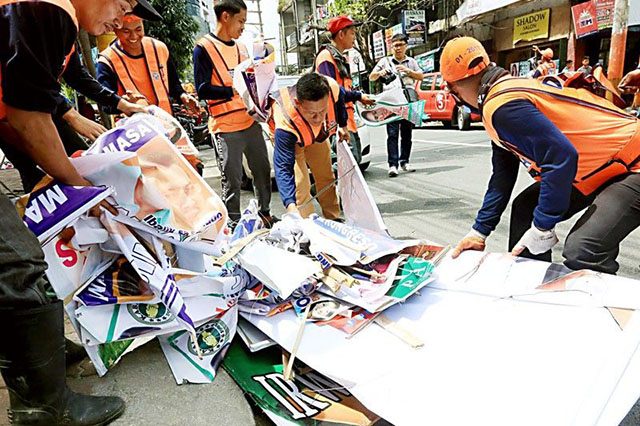
Commission on Elections spokesperson James Jimenez reminded the public about the rules on campaign paraphernalia ahead of the start of the campaign period for national candidates.
Candidates for national positions and party-list groups can start campaigning from February 8 until May 7, 2022.
These are candidates running for the positions of the president, vice president, senator and party-List groups seeking representation in Congress.
On the other hand, candidates for local positions and the Lower House will be allowed to campaign from March 25 until May 7.
They are running for the positions of the House of Representatives members, regional, provincial, city and municipal officials.
In a tweet on February 7, Jimenez said that rules about printed campaign materials in the Fair Elections Act will immediately take effect as the campaign period starts.
“Campaign period for national candidates starts midnight tonight. During the campaign period, printed campaign materials must conform to Fair Elections Act regulations as to size and location of posting,” he said.
Campaign period for Nat’l candidates starts midnight tonight. During the campaign period, printed campaign materials must conform to Fair Elections Act regulationsas to size and location of posting. COMELEC Reso 10732 is also in effect, on in-person campaigns. #votesafepilipinas
— James Jimenez (@jabjimenez) February 7, 2022
Jimenez also mentioned the new Comelec Resolution 10732 for safe, in-person campaigning amid the pandemic.
“COMELEC Reso 10732 is also in effect, on in-person campaigns. #votesafepilipinas,” he said.
A Twitter asked later asked him if residents can put up posters and tarpaulins within their own properties.
Jimenez replied to this in a quote-retweet.
“Private residences may put up campaign materials on their property, subject to the size limitation: maximum size for posters is 2′ x 3′,” he said.
Rules on lawful posters and tarpaulins
Under Section 6 of Resolution 10730 for the rules of the Fair Elections Act, the following are guidelines for posters and tarpaulins considered “lawful”:
- Cloth, paper or cardboard posters, whether framed or posted, with an area not exceeding 2 x 3 feet, except that, at the site and on the occasion of a public meeting or rally, or in announcing the holding of said meeting or rally
- Streamers not exceeding 3 x 8 feet in size, shall be allowed: Provided, That said streamers may be displayed five days before the date of the meeting or rally and shall be removed within 24 hours after said meeting or rally
Other printed materials such as pamphlets, leaflets and stickers should also not exceed 8 ½ inches in width and 14 inches in length.
Campaign posters and tarpaulins should also be posted in the following places only:
- Authorized common poster areas in public spaces
- Private properties with consent of the owners
Political parties and their candidates are further encouraged to use safe, eco-friendly materials.
“Parties and candidates are hereby encouraged to use recyclable and environment[1]friendly materials and avoid those that contain hazardous chemicals and substances in the production of their campaign and election propaganda,” the resolution read.
For safe in-person campaigning
Resolution 10732, meanwhile, provided the guidelines for the safe conduct of in-person campaigning, rallies, conventions, motorcades, and miting de avance,
The following are among the common prohibited acts across all category levels:
- Handshakes, hugs, kisses, going arm-in-arm, or any action that involves physical contact among the candidate, their companions, and the public
- Taking selfies, photographs and other similar activities that require close proximity between the candidate and their companions, and the public
- Distribution of food and drink, and all other goods or items









